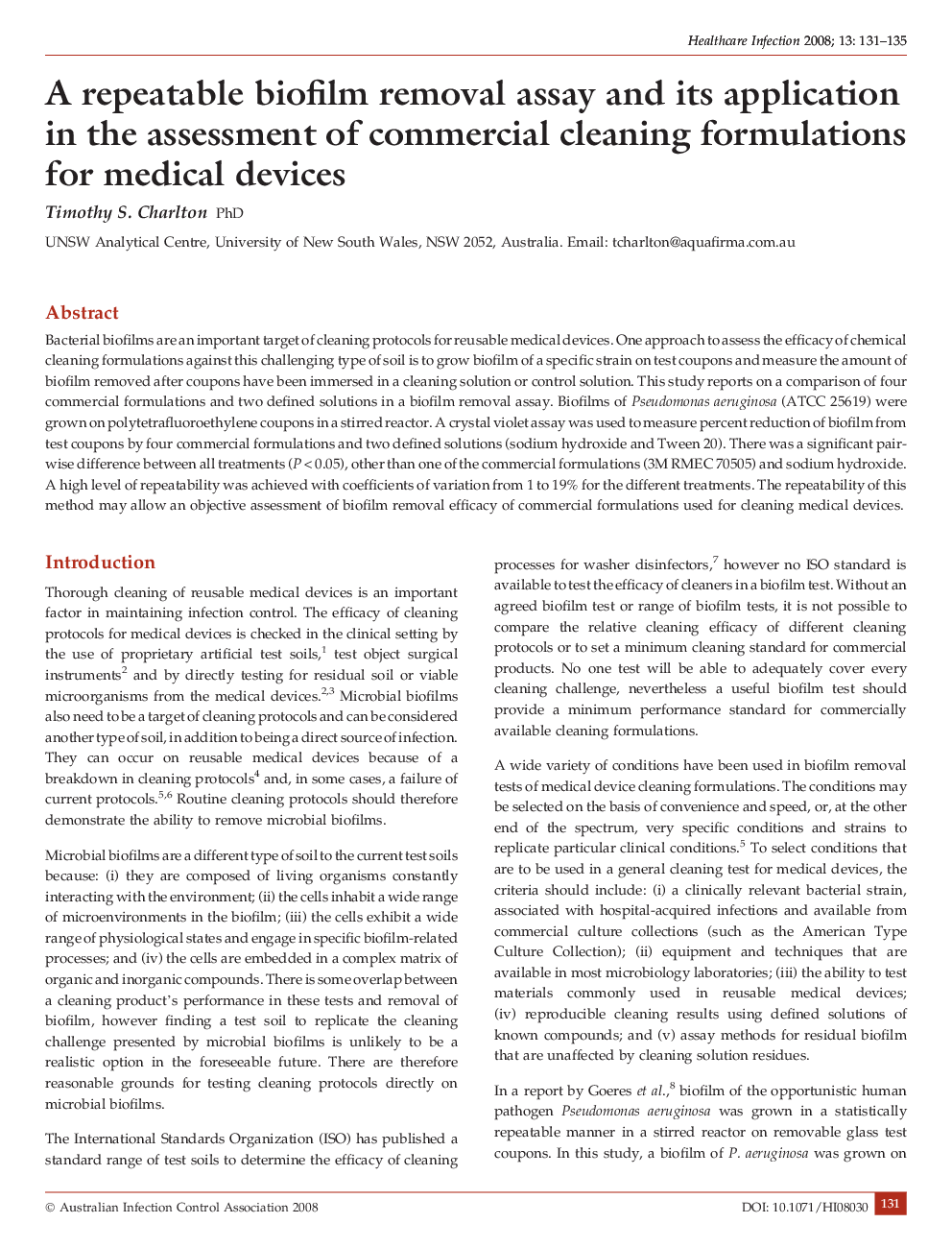| Article ID | Journal | Published Year | Pages | File Type |
|---|---|---|---|---|
| 2685642 | Healthcare infection | 2008 | 5 Pages |
Abstract
Bacterial biofilms are an important target of cleaning protocols for reusable medical devices. One approach to assess the efficacy of chemical cleaning formulations against this challenging type of soil is to grow biofilm of a specific strain on test coupons and measure the amount of biofilm removed after coupons have been immersed in a cleaning solution or control solution. This study reports on a comparison of four commercial formulations and two defined solutions in a biofilm removal assay. Biofilms of Pseudomonas aeruginosa (ATCC 25619) were grown on polytetrafluoroethylene coupons in a stirred reactor. A crystal violet assay was used to measure percent reduction of biofilm from test coupons by four commercial formulations and two defined solutions (sodium hydroxide and Tween 20). There was a significant pairwise difference between all treatments (P < 0.05), other than one of the commercial formulations (3M RMEC 70505) and sodium hydroxide. A high level of repeatability was achieved with coefficients of variation from 1 to 19% for the different treatments. The repeatability of this method may allow an objective assessment of biofilm removal efficacy of commercial formulations used for cleaning medical devices.
Related Topics
Health Sciences
Medicine and Dentistry
Infectious Diseases
Authors
Timothy S. PhD,
